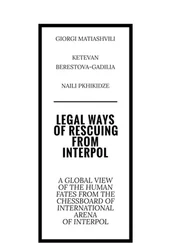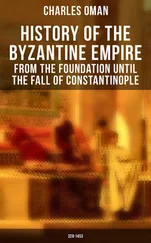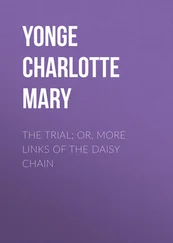Over the next few years, the darkness fell deepest around the gloomy towers and brackish moats of Machecoul, and never more so than in 1437, when two small skeletons were found inside the castle. Rumours were soon rife. Some claimed that Gilles was kidnapping youths to sell to the English. Others whispered that he was writing a book of spells with human blood. A few may even have begun to wonder why he had chosen to dedicate his chapel to the Holy Innocents – the infants slaughtered in their cradles by King Herod.
Such matters might ordinarily have come to nothing. Scurrilous tittletattle about the misfortunes of a few under-age peasants was never likely to touch the reputation of a nobleman in fifteenth-century France. The talk of diabolism was a little more risky, coming at a time when Europe’s witch-hunts were warming up, but invocation of demons still remained a popular hobby among French aristocrats. A discreet lord would have had nothing to fear. But discretion had never been Gilles’s strong suit – and incontinence would prove to be his downfall.
As he had traveled, staging miracle plays and mysteries and keeping his choirboys supplied with chalices, censers and pyxes, he had churned his way through the fortune that three bloodlines had taken centuries to accumulate. And in May 1440, hubris finally met nemesis. Having recently sold one of his last properties, a fortress at St-Étienne-de-Mermorte, to a certain Geoffrey le Ferron, he decided that he wanted it back. At the head of a posse, he stormed into its church brandishing a double-headed poleaxe and forced its priest – who was also le Ferron’s brother – to open the castle gates, before tossing him into its dungeon. It is hard to imagine an act of gratuitous violence that would have been better calculated to bring Gilles’s impunity to an end. Invasion of a church violated ancient privileges of the Bishop of Nantes. Geoffrey le Ferron was no mere castellan but treasurer to the Duke of Brittany. The duke was the only man below the French king to whom Gilles owed fealty, and was thus entitled to confiscate what remained of his vassal’s wealth if he was convicted of a felony. Gilles had finally found a mark to overstep.
By the early fifteenth century, the papal–national conflict had been unequivocally resolved in favour of secular rulers in France, and the bishopric of Nantes would now work loyally alongside the Duke of Brittany’s officers. Proceedings were launched in the episcopal court, and covert inquiries produced a secret report in late July. One and a half months later, ducal officers arrested Gilles along with two servants and two priests. Four days after that, on 19 September 1440, he was escorted into the great hall of Nantes Castle to be told that he faced charges of heresy. Gilles had doubtless come to terms with the fact that abducting a priest at poleaxe-point was going to require some penance, but when he was brought back to court almost three weeks later it became clear that the term ‘heresy’ covered a multitude of sins. Alongside sundry acts of impiety, apostasy, and sacrilege, the indictment alleged that he had made pacts with demons, and that he had sodomized and murdered some 140 children.
Gilles seems to have been unable quite to believe that the court was presuming to judge him for such trifles. He haughtily insisted on appealing, and when the judges told him that the request was frivolous, and ought to have been in writing anyway, he fell into a monstrous sulk. Even when the prosecutor swore four times to the truth of his indictment, he refused to speak. Five days later, the displeasure had hardened. Spitting invective at the bench, Gilles condemned his judges as ‘simoniacs and ribalds’ and announced that he would rather hang from a rope than plead to their charges. In the face of such defiance, they deployed the most powerful sanction at their disposal. They excommunicated him.
The judges knew their quarry. When Gilles reappeared two days later he was in tears, begging forgiveness for having questioned their right to try him and pleading for readmission to the Church. The clerics duly re-embraced him to the Church’s bosom, but made sure simultaneously to have him watch his servants and priests being sworn, in preparation for secret interrogations that were to take place over the next few days. The pressures on Gilles were mounting; but when the indictment was read aloud, he seemed strangely disengaged. He admitted borrowing a book that explained how demons might be persuaded to transmute base metals into gold, but made a point of insisting that he had returned it to its owner. He had employed several alchemists to freeze quicksilver, he accepted, but he was anxious to assert that he had neither invoked evil spirits nor made sacrifices to them. Of lost children, he spoke not a word.
The members of Gilles’s household were then interviewed – very probably, under torture – and, five days later, their statements were read to him. All described acts of diabolism and murder in chilling detail, and Gilles declined to challenge any of the evidence – but the court remained unsatisfied. It duly ordered that he be interrogated on the rack ‘in order to shed light on and more thoroughly scrutinize the truth’. Gilles, allowed a night to consider his position, decided that that would not be necessary. On the following afternoon, he made a full confession in his cell to four judges and the prosecutor, and was made to repeat it a day later in a packed courtroom. It was an extraordinary performance.
He began by asking that his words be published not just in Latin but also in French, in order that as many people as possible could learn from his mistakes. He implored his listeners to raise their children with good manners and virtuous habits, because he had been undone by an unbridled childhood. And he then confessed to the abduction and murder of ‘so many children that he could not determine with certitude the number’ in terms that, even six centuries distant, retain their power to appal. Alongside his servants and other companions, he had throttled his victims and hanged them from hooks, sodomized them and ‘ejaculated spermatic seed in the most culpable fashion on [their] bellies…as much after their deaths as during it’. He had stabbed and battered them, decapitating some, and while they were in their last throes, he had often ‘sat on their bellies and…laughed at them’. Once dead, he had ‘embraced them…contemplating those who had the most beautiful heads and members’, and had then torn open their bodies to ‘[delight] at the sight of their internal organs’.
Having dealt with the question of dead children, Gilles turned to diabolism – a subject on which he seems to have spent about four times as long – and admitted that he had often hired magicians to invoke demons. All were evidently con artists, warning him off at crucial moments and sometimes beating themselves up in locked rooms to prove the risks they were running, but although their dishonesty had eluded Gilles, his participation had been far from passive. He had once used blood from his little finger to write to a demon, he recalled. On another occasion, he had given a magician the hand, heart, and eyes of a young boy in a jar.
Gilles concluded with a plea to all fathers present not to tolerate sloth or fine dressing in their children, and a warning that his crimes were born out of an insatiable appetite for delicacies and mulled wine. By now in tears, there was just one other thing that he wanted to share. Temptation had been strewn across the path of his life, he admitted. It was only by virtue of his steadfast affection for the Church that he had lost neither body nor soul to the Devil.
Any confession made after the threat of torture in response to accusations by imprisoned accomplices has to be suspect, but Gilles’s words – oblivious as a psychopath’s and naive as a child’s – ring so true that they are almost impossible to disbelieve. The portrait draws from life rather than the formulaic fantasies of inquisitors. It does not depict an omnipotent diabolist, but a gullible fool. And the clinical descriptions of murder are not the words of someone who imagined what crime might be like. They are the recollections of a man who had watched children die.
Читать дальше




![Theresa Cheung - The Dream Dictionary from A to Z [Revised edition] - The Ultimate A–Z to Interpret the Secrets of Your Dreams](/books/692092/theresa-cheung-the-dream-dictionary-from-a-to-z-r-thumb.webp)







